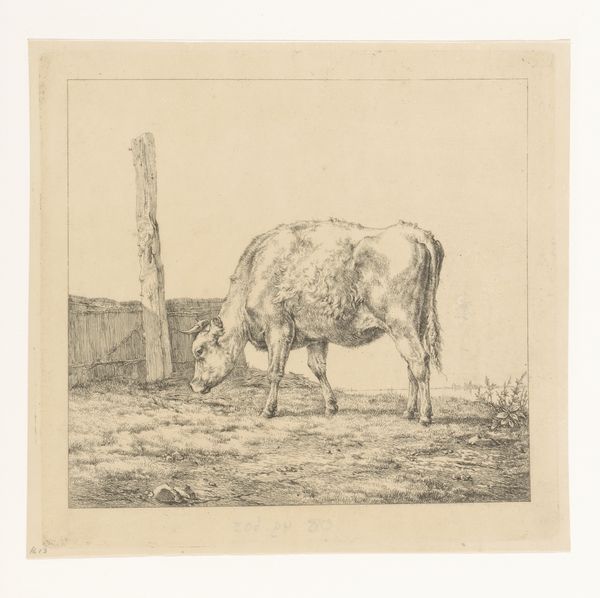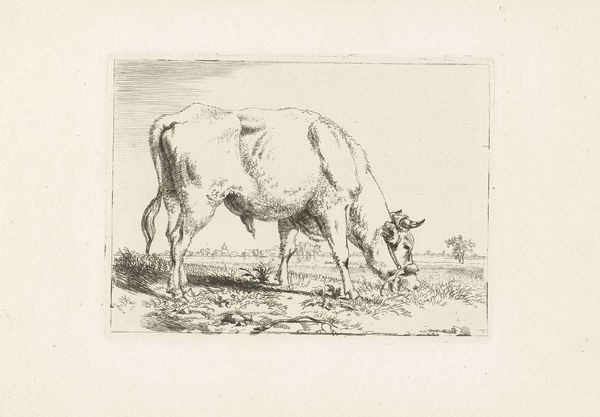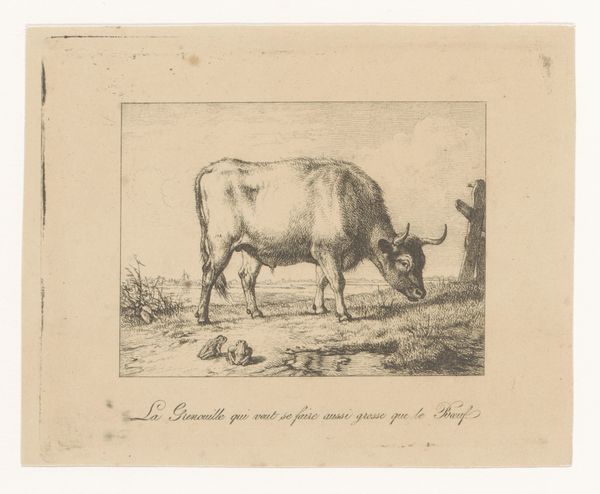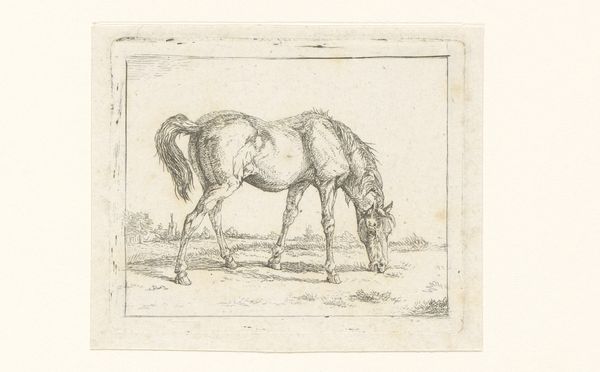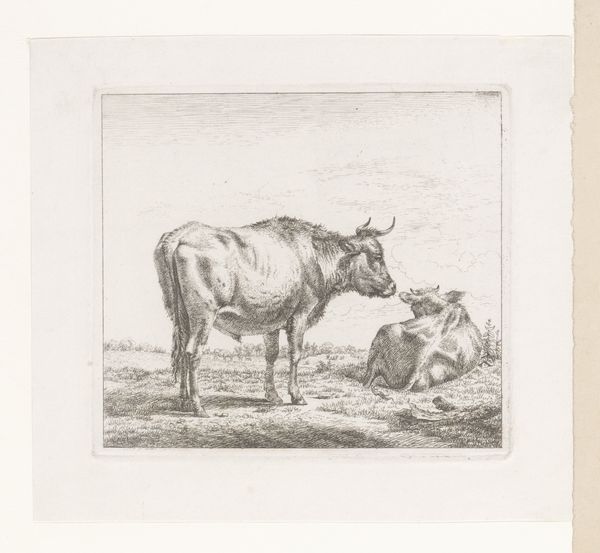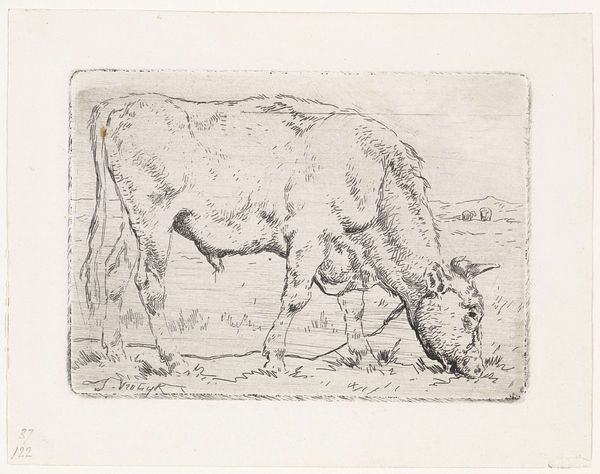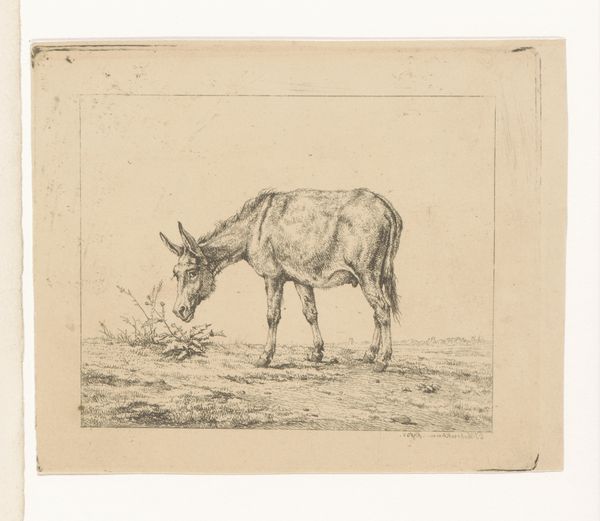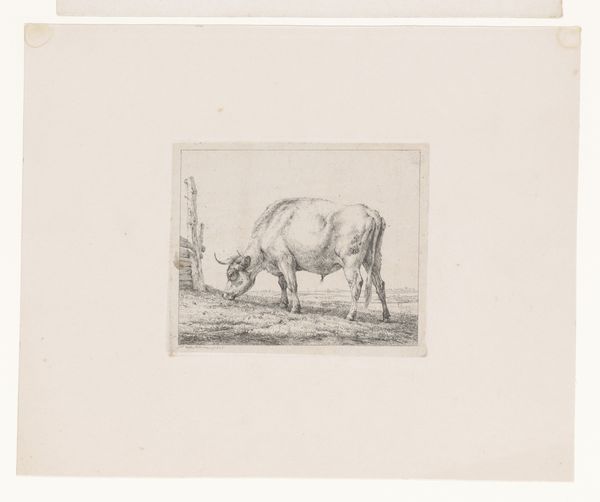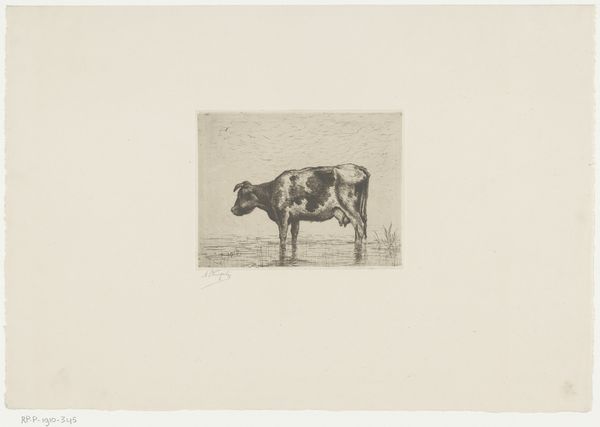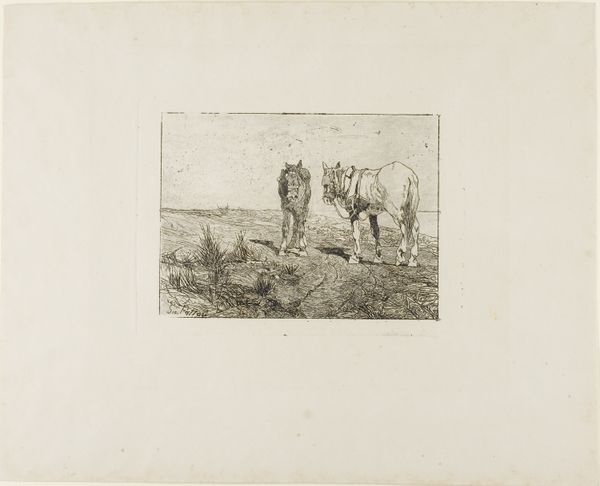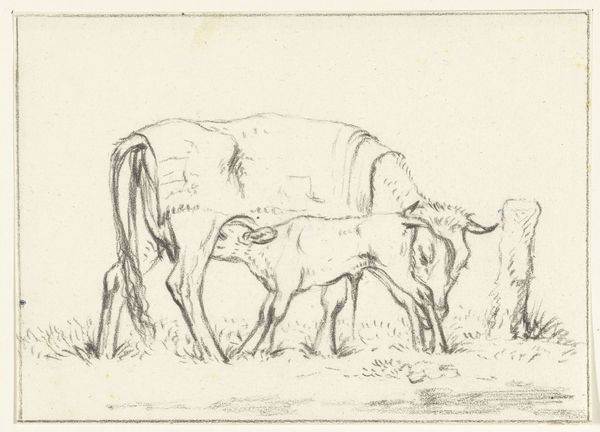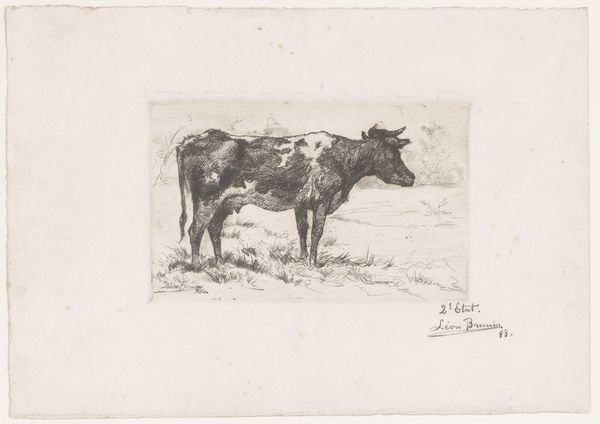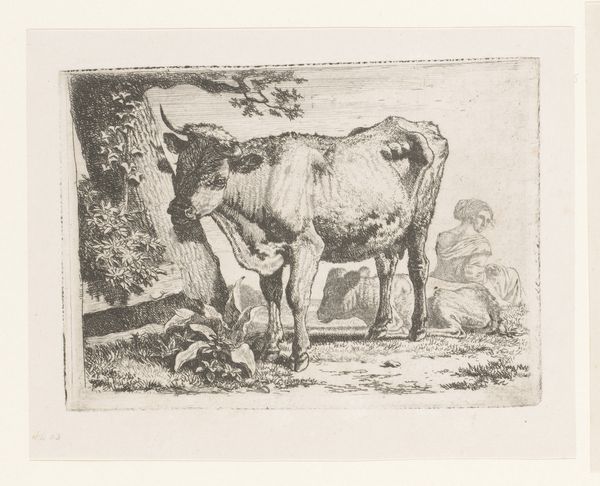
etching, engraving
#
animal
#
pen sketch
#
etching
#
old engraving style
#
landscape
#
bird
#
genre-painting
#
engraving
#
realism
Dimensions: height 100 mm, width 121 mm
Copyright: Rijks Museum: Open Domain
Curator: I find myself drawn to this modest etching from 1828. It’s called "Rund bij paal met vogel erop"—"Cow by post with bird on it"— by Eugène Verboeckhoven and it’s held here at the Rijksmuseum. Editor: My immediate thought is of a pastoral scene. It's very simple. The rough texture created by the etching gives the image an earthy feel, but the focus is really on that strong ox. Curator: Verboeckhoven was known for his animal paintings and prints, wasn't he? This piece is a good example of the 19th-century art market's fascination with rural life and the "noble animal." The image of domesticated animals becomes very popular amongst city dwellers, and you get an explosion of idyllic representations that conveniently omit any evidence of slaughterhouses, or farm labor conditions. Editor: Indeed! The visible strokes show that handcraft that’s such a contrast with mass production starting at this time. The work gives a face to the beast: The posture is peaceful but that animal seems ready to do physical work. Even the material of the work speaks: paper. It can travel. A way of consuming an image without owning the "thingness" of its referent. Curator: That’s a good point about its circulation! And there's a certain... awkwardness in the composition, though. The cow is front and center, but then you have the post and the bird, almost like an afterthought. Editor: Or a detail the worker in the fields sees on an average work day! A momentary pause of reflection perhaps. The lines give it such a robust, muscular form; that labor implied by the work… I'm not sure a photograph could achieve that effect. Curator: That reminds me of the Realist movement, that wanted to reflect what was there without adding additional elements... Well, Eugène, clearly aimed for realism, and the etching as a medium made it possible to get wide distribution. The urban audience can see what’s happening outside their town, reinforcing the notion of "natural hierarchy" and control! Editor: True, true! The materiality and form are so intertwined with social and industrial changes, from rural subject matter, to printmaking… This deceptively simple piece packs a lot of history. Curator: It definitely does. Next time you're in the fields, notice everything in them... Even a modest image of a cow standing by a pole might conceal some interesting considerations.
Comments
No comments
Be the first to comment and join the conversation on the ultimate creative platform.
